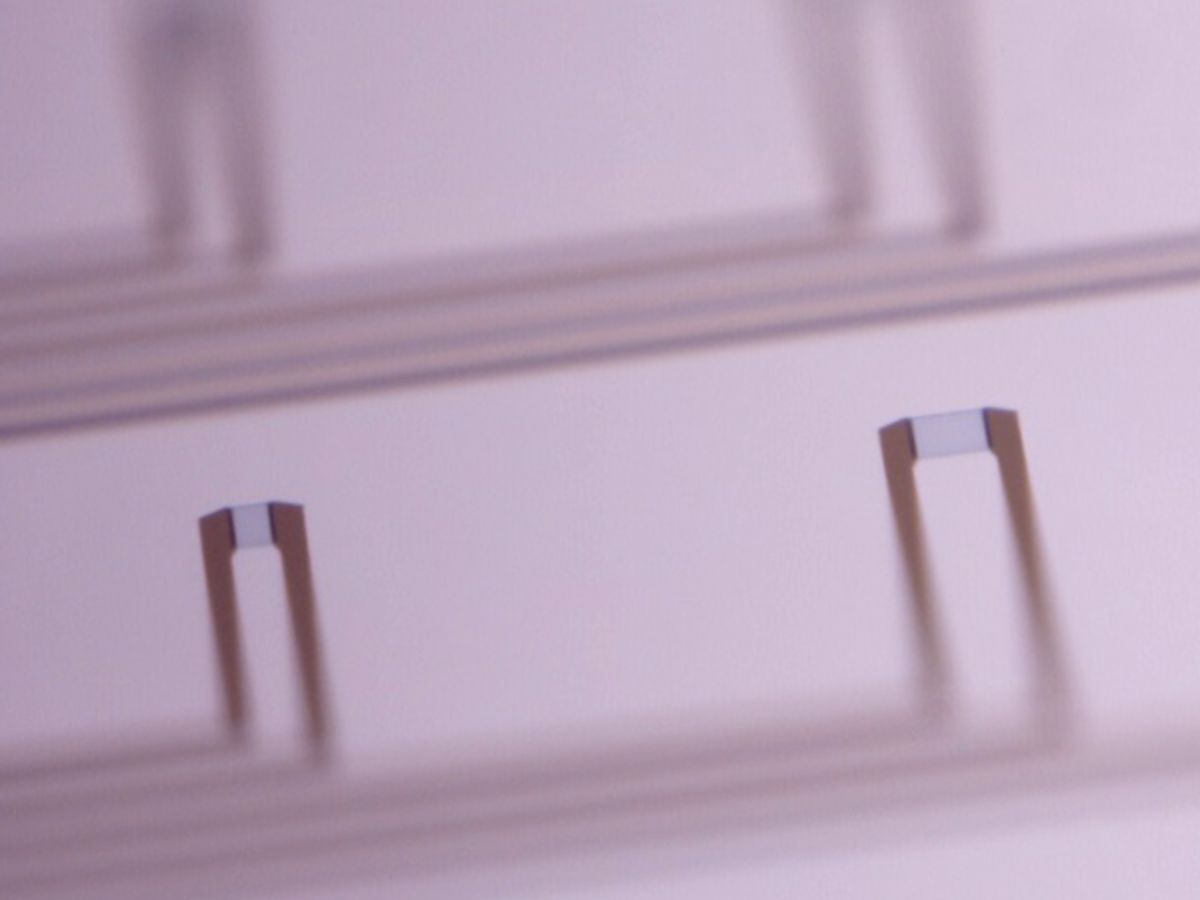The next frontier for electronics could lie inside the human body, with sensors that keep track of biomarkers and brain activity, systems to deliver drugs or monitor exercise levels, and communications networks that allow such devices to call on the processing power of your smartphone and send your data to the doctor’s office.
“We’re moving toward a world where rather than going to the doctor once a month and having a measurement made, we’re going to have continuous monitoring,” says Ifor Samuel, head of the Organic Semiconductor Optoelectronics group at the University of St. Andrews, Scotland. Goaran Gustafsson, an expert in printed electronics and bioelectronics at the Swedish research institute Acreo Swedish ICT, says the idea is sort of OnStar for the body, similar to the General Motors system that lets a technician unlock your car remotely or notify the tow truck when you’ve had a breakdown.
Wiring the body could provide more realistic measurements of everything from blood oxygenation and to stress hormone levels, keeping them in the context of everyday life and perhaps providing early warnings of problems. Samuel and Gustafsson were among researchers at the Materials Research Society’s December meeting in Boston who talked of efforts to develop a network of devices that would keep track of people’s health and intervene where necessary. While most of these proposals will take several years to develop, and will require regulatory approval, here are some ideas these researchers are pursuing.
Glucose sensing: Gustafson has used roll-to-roll printing techniques to build disposable glucose sensors, which cost less than a dollar apiece. “I expect them to be down to 10 cents, or maybe lower,” he says. Sensors can communicate their findings through flexible displays printed on polymer or by using antennas made of a silver ink to communicate with the wearer’s smart phone.
Measuring Brainwaves: George Malliaras, head of the bioelectronics department at Ecole Nationale Supérieure des Mines de Saint-Étienne, France, is working on organic electrochemical transistors (OECTs) as a replacement for metallic electrodes, which can be either implanted or placed on the brain’s surface both to monitor activity—for instance to measure brain function in Parkinson’s disease—and to deliver a stimulus to brain. The transistors consist of a thin polymer film that forms a channel in contact with an electrolyte; tiny difference in electrical potential where the electrolyte touches the polymer drive ions in and out of the channel, creating a measureable change in the transistor. The devices he says, are superior to conventional electrodes. “You have a better ability to record and better long-term performance,” he says. A less-invasive version of the OECTs, printed on textiles to make flexible electrodes that attach to the skin, could show up in the relatively near future, Malliaras says.
Nervous system control: Rather than only getting data out of the body, Gustafsson wants to be able to send messages in the other direction. His group and others are working on an implantable ion pump, based on conductive organic polymers. For every electron sent into the pump, an ion or a molecule—perhaps sodium or a neurotransmitter—comes out, providing a way to communicate with the nervous system. He’d like to use it, for example, to deposit the neurotransmitter gamma-aminobutyric acid (GABA) onto a precise spot on the spinal cord of a patient suffering chronic pain. Malliaras says GABA can also be used to calm the brain and fend off a pending epileptic seizure, while delivering a flow of potassium ions could stimulate neural activity.
Light control: Samuel has developed a sensor that uses an organic LED to measure muscle contractions, with an eye to using those measurements to control a prosthetic limb or a remote robot arm. Muscle fiber scatters light both parallel to and perpendicular to the direction of the muscle fiber, and that scattering changes when the muscle contracts. Samuel’s device shines light into the skin and use four photodiodes—two along the muscle, two perpendicular—to measure the pattern of changes in the scattered light.
Smart contacts: The smart contact lens under development at the Biomedical Nanomaterials Lab at Pohang University of Science and Technology in Korea contains sensors to measure glucose levels in tears, gold nano-reservoirs containing small amounts of a drug, and a resonant magnetic coupling device to provide power wirelessly. Changes in current in the sensor measure changes in the concentration of glucose, and a voltage applied to the reservoirs dissolves the gold and releases the drug, explains Dohee Keum, a graduate student in the lab.
Neil Savage is a freelance science and technology writer based in Lowell, Mass., and a frequent contributor to IEEE Spectrum. His topics of interest include photonics, physics, computing, materials science, and semiconductors. His most recent article, “Tiny Satellites Could Distribute Quantum Keys,” describes an experiment in which cryptographic keys were distributed from satellites released from the International Space Station. He serves on the steering committee of New England Science Writers.



